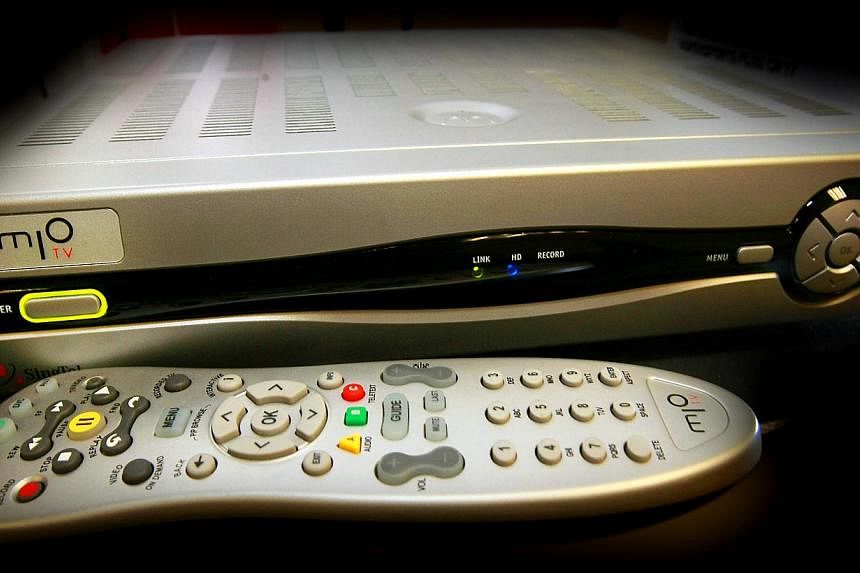As early as the first half of next year, consumers can expect to use the cable network within their homes for mio TV services.
SingTel has started sourcing for hardware for this purpose, according to sources. The bulk order could be in the "tens of thousands", said a source close to the project.
The cable connection points pre-installed in every room of a home now carry only TV and broadband signals from StarHub. But the authorities recently ordered StarHub to share the network, ending a four-year dispute between the two telcos.
The Infocomm Development Authority's (IDA) decision last month also means that any service provider can tap the existing cable network within homes to deliver their services, including those sent over the ultra-fast fibre-optic network.
SingTel has been eyeing the cable points for home networking because, unlike Wi-Fi, the cable network is not susceptible to interference and slowdowns. It declined to comment on when the hardware will be available. Its spokesman would say only that it is "discussing access fees and other terms and conditions with StarHub to determine if it is commercially viable for us to offer the solution".
To pipe its mio TV services, SingTel must install adaptors at each end of the cable points to prime incoming broadband signals for transmission over the cable network. The adaptors must be custom-made to fit specifications laid down by the IDA.
StarHub had objected to SingTel's equipment, saying it would cause a drop in speed and interference problems for its cable broadband and TV users, including those in neighbouring residences.
The dispute started in 2010 and some home broadband users had grown weary of waiting and had gone ahead to wire up their homes with ethernet cables, even though the wiring looked ugly.
Business manager Ian Tan, 38, said: "This resolution between the two telcos has come too late for most tech enthusiasts."
But there are still customers looking forward to using cable points for home networking, although cost is a major concern.
Administrative assistant Bryan Koh, 24, said the latest development is "good news".
"I have not been able to surf the Internet in my bedroom as Wi-Fi signals have to pass through at least three concrete walls," he said. "But what are the additional costs?"
Mr Michael Tan, 44, director of an IT firm, said that the cost of using existing cable points may be the same as laying ethernet cables - around $80 per connection point.
"But people concerned about the ugly surface trunking would not want to install ethernet cables," Mr Tan said. He added that concealing the trunking would cost several times more.
So far, it seems that only SingTel customers will benefit. Broadband providers such as ViewQwest and MyRepublic said they will stick to ethernet cabling, which they say offers the fastest connection.

